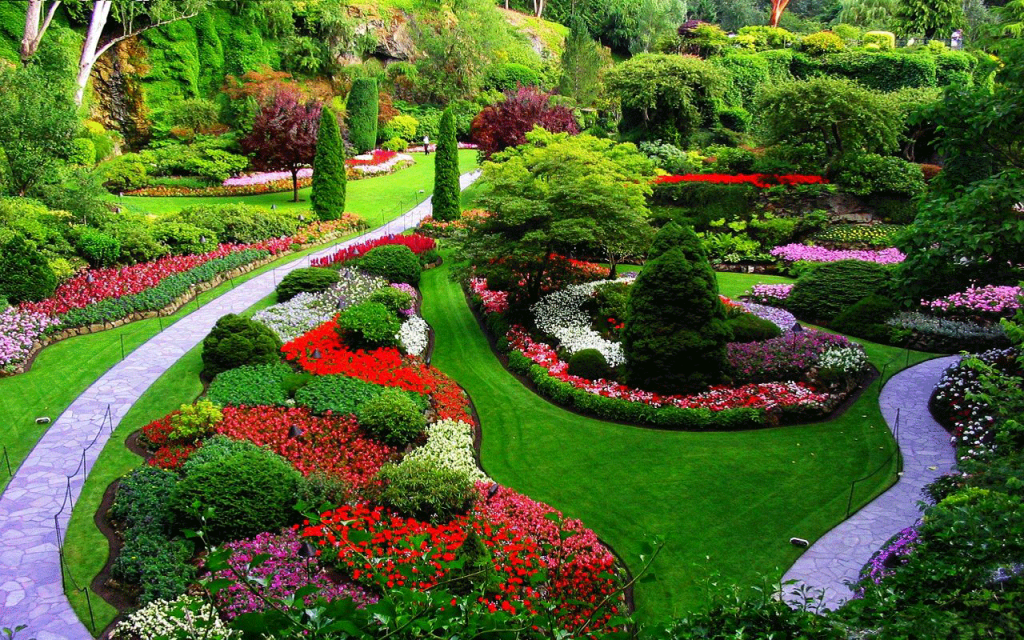Hilton Head Landscapes Can Be Fun For Anyone
Hilton Head Landscapes Can Be Fun For Anyone
Blog Article
Top Guidelines Of Hilton Head Landscapes
Table of ContentsExcitement About Hilton Head LandscapesThe Buzz on Hilton Head LandscapesAll about Hilton Head LandscapesThe Facts About Hilton Head Landscapes RevealedThe 6-Second Trick For Hilton Head LandscapesSome Of Hilton Head LandscapesHilton Head Landscapes Fundamentals Explained
Line develops all types and patterns and can be used in a selection of methods in the landscape. Line in the landscape is developed by the edge between two products, the synopsis or silhouette of a kind, or a lengthy linear attribute. Lines are a powerful tool for the developer since they can be utilized to produce a boundless variety of shapes and forms, and they manage activity of the eye and the body.

Lines in the landscape. The homes of lines establish exactly how people respond to the landscape, both emotionally and physically.
Hilton Head Landscapes for Beginners
Straight lines are usually discovered in hardscape sides and material. Curved lines produce an informal, all-natural, loosened up personality that is connected a lot more with nature and unbalanced balance. Bent lines move the eye at a slower pace and add secret to the room by developing surprise sights. Vertical lines move the eye up, making an area really feel bigger.
Vertical lines in the landscape include high, slim plant product, such as trees, or high frameworks, such as an arbor or a bird home on a pole. Horizontal lines move the eye along the ground aircraft and can make a space really feel bigger. Reduced lines are much more suppressed and produce a sensation of rest or repose.
Hilton Head Landscapes Can Be Fun For Everyone
Reduced lines are created by low garden wall surfaces, pathways, and short hedges. Lines are utilized to draw types on a strategy. In strategy sight, they specify plant beds and hardscape areas. Lines are likewise produced by the vertical types of developed features and plant material. There are three main line types that create kind in the landscape: bedlines, hardscape lines, and plant lines.
Bedlines attach plant product to your home and hardscape due to the fact that the eye adheres to the line, moving the look via the landscape. Hardscape lines are produced by the edge of the hardscape, which delineates the constructed structure. Line can likewise be produced by long and slim materials, such as a fencing or wall.
Rumored Buzz on Hilton Head Landscapes
Kind is discovered in both hardscape and plants, and it is typically the dominant visual component that spatially arranges the landscape and commonly determines the design of the garden. The kind of structures, plant beds, and garden ornaments additionally establishes the general kind theme of the garden. Official, geometric forms include circles, squares, and polygons.
Plants create type in the garden via their describes or silhouettes, but kind can likewise be specified by a gap or negative area between plants - landscaping hilton head sc (https://dzone.com/users/5166843/h1tnhdlndscps.html). Circles can be complete circles, or they can be split into half circles or circle segments and incorporated with lines to develop arcs and tangents
The Best Guide To Hilton Head Landscapes
Circles can likewise be extended into ovals and ellipses for more variety and interest. Circles are a strong style form due to the fact that the eye is constantly drawn to the center, which can be used to highlight a focal factor or attach various other types. Figure 2. Circular types in hardscape and lawn panels.
The square form can likewise be segmented and previously owned consistently to create a grid pattern. Unlike circles, squares are stronger on the edges, which can be lined up or overlapped to produce distinct patterns and even more complex kinds. Polygons are many-sided forms with straight edges. Triangulars, for example, are three-sided polygons.
Twisting lines frequently resemble the natural training course of rivers or streams and can be referred to as smooth lines with deeply bent undulations. Twisting lines (Number 3) function well for paths, plant bedlines, and completely dry stream beds. Twisting lines can add passion and enigma to a yard by leading audiences around edges to uncover brand-new sights and spaces.
Top Guidelines Of Hilton Head Landscapes

Number 5. Fragmented sides: tipping rocks in pathway. Type is the most enduring top quality of a plant (Landscaping bluffton sc). https://www.mixcloud.com/h1tnhdlndscps/. Common plant kinds are well developed and standardized, as kind is one of the most consistent and recognizable quality of plants. Type can additionally be produced through the massing of plants, where the overall mass develops a various type than an individual plant.
An extremely contrasting form needs to be used with careone or two work well as a centerpiece, yet way too many create chaos. Natural plant types, instead than over-trimmed types, need to develop the bulk of the make-up. The relevance of overall kind is much more or much less depending on the seeing perspectivethe kind of a tree can appear fairly different to an individual standing under the canopy versus watching the tree from a distance in an open field.
The Ultimate Guide To Hilton Head Landscapes
Plant kinds additionally produce and specify deep space or open rooms in between the plants, developing either convex or scooped types in deep spaces. High-arching tree branches normally develop a concave open area under the branches, and a round canopy with reduced branches fills up the area to develop a convex kind outdoors area under the tree.

Report this page